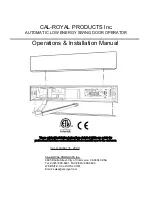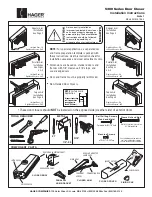
5
-Operators should wear a non- fl ammable welding helmet or face shield
designed so as to shield the neck and the face, also on the sides. The helmet
or the face shield should be fi tted with protective glasses adequate to the
welding process and current used. Glass screens must always be kept clean,
and immediately replaced if they are broken or cracked (Fig.2). It is good
practice to install a pane of transparent glass on top of the adiactinic glass,
between it and the welding area. This pane can be frequently replaced when
incandescent spatters and deposits greatly reduce visibility. When working
with coated plates that emit toxic fumes when heated, use an air-supplied
respirator.
- Welding should be done in a closed area that does not open onto other working
areas, in order to protect all workers against radiation and fumes. If such an area
cannot be provided, the welding area must be delimited by protective screens painted
in opaque black large enough to restrain the visibility of any person situated near
the area (Fig. 3).
- Remove all chlorinated solvents from the welding area before welding. Certain
chlorinated solvents decompose when exposed to ultraviolet radiation to form
phosgene gas.
- Never, under any circumstances, look at an electric arc without suitable eye
protection (Fig. 4).
FIG.2
FIG.3
FIG.4






































